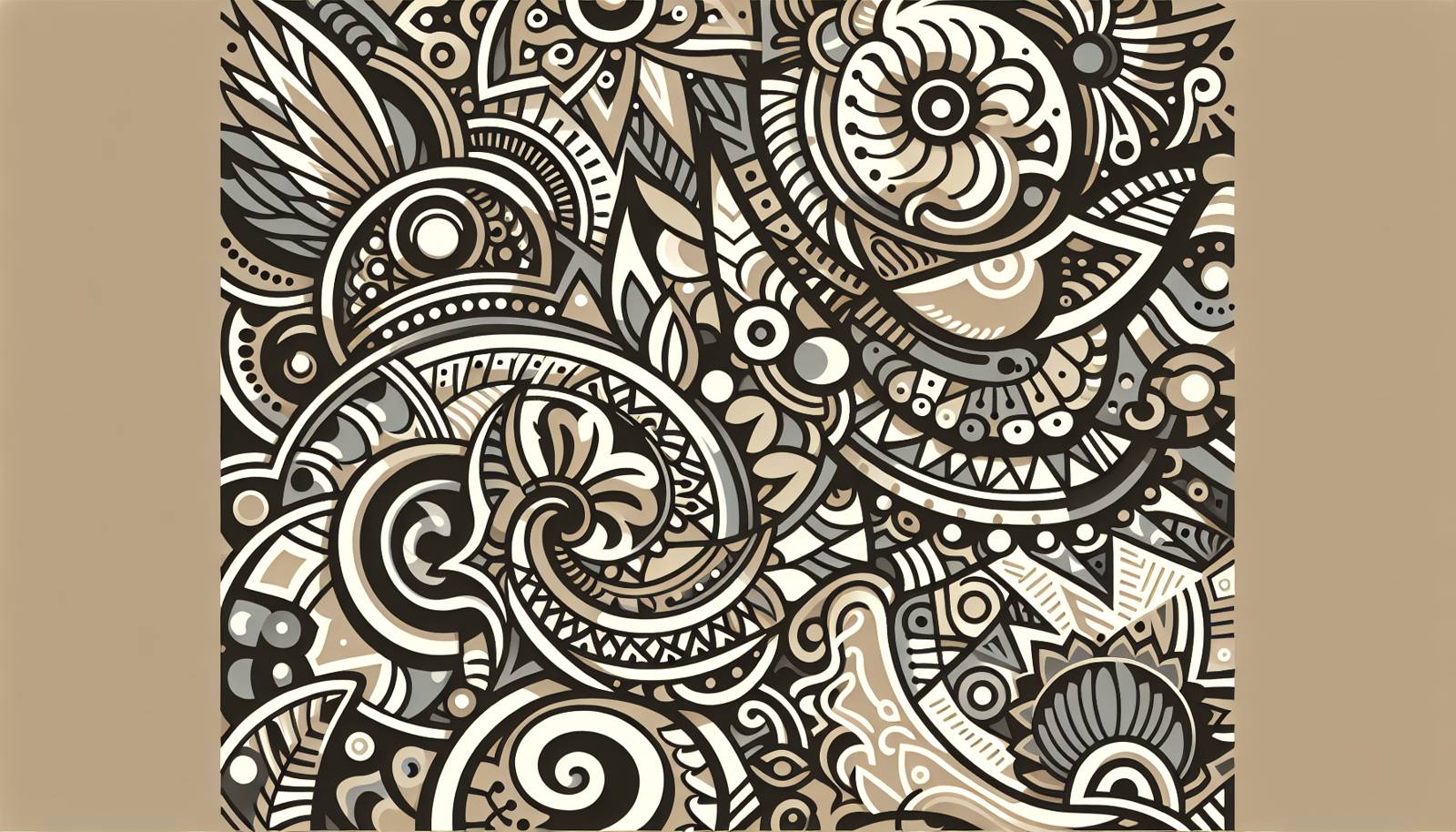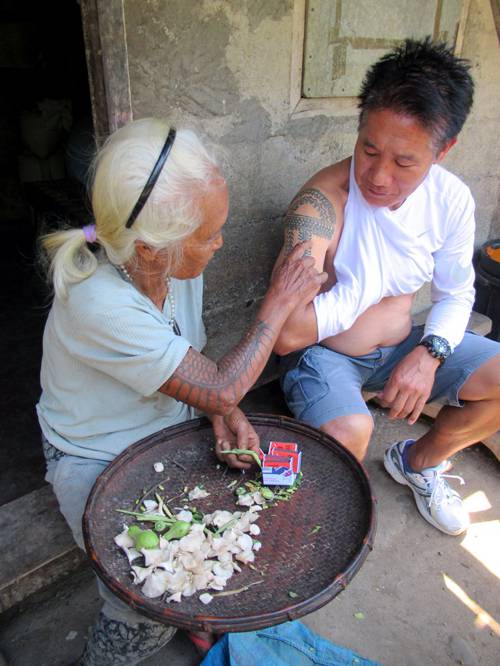
FAQ About The Role of Traditional Tattoos in Cultural Identity

What are traditional tattoos?
Traditional tattoos are body art forms that are deeply rooted in cultural and historical contexts. They often involve symbolic designs and motifs that are significant to specific cultures or communities. These tattoos can represent a wide array of elements, such as ancestry, social status, rites of passage, and spiritual beliefs. The styles and meanings of traditional tattoos vary significantly across different cultures.

How do traditional tattoos reflect cultural identity?
Traditional tattoos serve as a visual representation of an individual's cultural identity, embodying heritage and ancestral lineage. They often include symbols or patterns specific to the culture or community, which can denote tribal affiliation, social status, or achievements. By wearing these tattoos, individuals express pride in their cultural roots and keep the narratives of their ancestry alive.

What are some common cultures that use traditional tattoos?
Many cultures around the world have a rich history of traditional tattooing. Some of the most well-known include the Maori of New Zealand, with their intricate facial tattoos called moko, the Samoans with their pe'a and malu designs, the Tahitians, the Native American tribes, and many Southeast Asian cultures like Thai and Filipino. Each culture has distinct styles, techniques, and meanings associated with their tattoos.

What is the significance of Maori tattoos?
Maori tattoos, or moko, are considered a sacred art form among the Maori people of New Zealand. These tattoos are characterized by intricate, curvilinear patterns and are often applied to the face, symbolizing the individual's life story, social status, whakapapa (genealogy), and tribal affiliations. More than just decoration, moko serve as a profound connection to Maori history and identity.

How have modern tattoo practices been influenced by traditional tattoos?
Modern tattooing has been significantly influenced by traditional tattoo techniques and designs. Many contemporary tattoo artists draw inspiration from the symbolism, artistry, and methods of traditional tattoos. This can be seen in the popularity of tribal motifs and designs in modern tattoos, as well as the adoption of traditional hand-poking techniques in certain circles. These influences help keep the essence of cultural significance in today's tattoo practices.

Are traditional tattoos still relevant today?
Yes, traditional tattoos remain highly relevant today, especially within the cultures that originated them. They continue to serve as powerful symbols of cultural pride and heritage, while also gaining global appreciation for their artistic value. Traditional tattoo practices have seen a resurgence as descendants and outsiders alike embrace these symbols to connect with their heritage or appreciate their cultural significance.

What is the process of getting a traditional tattoo?
The process of getting a traditional tattoo varies depending on the culture and specific technique used. Generally, it involves manual techniques that differ significantly from modern machine tattooing. Many traditional tattoos are applied using methods such as hand-tapping or hand-poking, which require skill and precision. This process is often accompanied by cultural rituals or ceremonies that hold spiritual significance.

Why is cultural sensitivity important when getting traditional tattoos?
Cultural sensitivity is crucial when getting traditional tattoos, particularly if they are from a culture other than one's own. These tattoos are more than artistic expressions; they often hold deep cultural, spiritual, and historical significance. Being respectful involves understanding the meanings behind the tattoos, obtaining them from a practitioner from that culture, and being mindful of the cultural implications involved.

What are some common symbols used in traditional tattoos?
Traditional tattoos often feature symbols that carry specific meanings within the culture of origin. Common symbols include animals, natural motifs like sun and moon, spiritual icons, and geometric patterns. For instance, Polynesian tattoos might include tiki figures, while Native American tattoos could feature eagles, arrows, or dreamcatchers. Each symbol has a unique significance tied to cultural beliefs and narratives.

How do traditional tattoos differ from each other culturally?
Traditional tattoos differ culturally in terms of design, symbolism, placement on the body, and tattooing techniques. For example, Japanese irezumi involves distinct color palettes and motifs such as dragons and koi fish, while Samoan tattoos are characterized by their black ink and geometric patterns. The cultural context dictates these differences, reflecting the unique values, history, and beliefs of each culture.

Can traditional tattoos be considered a form of art?
Yes, traditional tattoos are considered a form of art. They encompass a combination of skilled technique, aesthetic design, and cultural storytelling. Each tattoo is a unique creation that holds personal significance for the wearer while embodying the intricate artistry of the tattooist. Cultural narratives and artistic expression are intertwined in traditional tattoos, making them a respected art form.

What role do traditional tattoos play in preserving cultural narratives?
Traditional tattoos play a significant role in preserving cultural narratives by acting as living documents of history, beliefs, and identity. They serve as visual reminders of cultural stories, values, and traditions that are passed down through generations. For many, these tattoos help keep the culture alive amid modernization and globalization, serving both as a personal connection to heritage and a public expression of cultural identity.

Are there any risks or misconceptions associated with traditional tattoos?
There are several misconceptions about traditional tattoos, such as the idea that they are primitive or less refined than modern tattoos. In reality, traditional tattooing requires a high level of skill and carries profound meaning. Risks can include the potential for cultural appropriation if individuals do not fully understand or respect the significance of these tattoos. Health risks, like with any tattooing, include infections, which can be mitigated by choosing an experienced practitioner who follows proper hygiene practices.

How can one learn more about the cultural significance of traditional tattoos before getting one?
To learn more about the cultural significance of traditional tattoos, one can start by researching the history and meaning behind the tattoos specific to the culture of interest. Books, documentaries, and interviews with tattoo practitioners and cultural historians provide valuable insights. Engaging with members of the culture, attending workshops, or participating in cultural events can also deepen understanding and appreciation.

Why might someone choose to get a traditional tattoo?
Individuals may choose to get a traditional tattoo for various reasons, such as honoring their ancestry, expressing cultural pride, or appreciating the artistry of traditional designs. For some, these tattoos represent a rite of passage or a significant personal experience. Others may seek to reconnect with or better understand their heritage through the symbolic nature of traditional tattoos.

How do cultural practices affect the designs and placements of traditional tattoos?
Cultural practices heavily influence the designs and placements of traditional tattoos. Each culture has specific traditions and spiritual beliefs that dictate the symbols used and where they are placed on the body. For example, in some Polynesian cultures, tattoos are traditionally placed on specific parts of the body to signify rank and achievements. Similarly, Maori facial tattoos encode personal history and social hierarchy.

Are traditional tattoos more painful than modern tattoos?
The pain experienced from traditional tattoos can differ from modern tattoos due to the techniques used. Traditional methods such as hand-poking or tapping may cause different pain sensations compared to machine tattooing. However, pain tolerance varies greatly among individuals, and the experience also depends on the tattoo's location and complexity. For many, the cultural and personal significance of traditional tattoos often outweighs the discomfort.

What are the ethical considerations when choosing a traditional tattoo?
Ethical considerations include ensuring cultural respect and authenticity. It is important to gain an understanding of the tattoo's significance and obtain it from a reputable artist with appropriate cultural knowledge. Additionally, individuals should consider how their choice might be perceived by the originating culture and whether their motivation aligns with honoring that culture rather than commodifying it.

Are there specific materials used in traditional tattooing?
Traditional tattooing often involves specific materials that vary by culture. For example, Polynesian tattoo artists might use natural tools made from bone and combs, while Japanese irezumi historically used wooden handles and metal needles. The inks were traditionally made from natural resources, like soot or plant extracts. Today, some artists might blend traditional methods with modern materials for safety and accessibility.

Is it appropriate for anyone to get a traditional tattoo?
While it is theoretically possible for anyone to get a traditional tattoo, it is crucial to approach this decision with respect and understanding for the cultural significance. Engaging in meaningful dialogue with the culture or community and adhering to protocols about how these tattoos are bestowed or earned can ensure cultural sensitivity and respect. Outsiders obtaining traditional tattoos should always consider their intentions and the potential impact on the source community.
